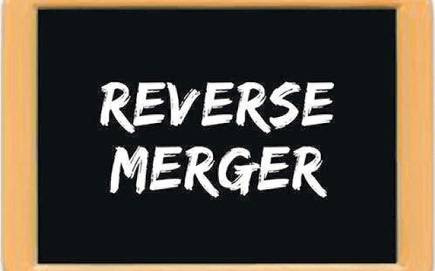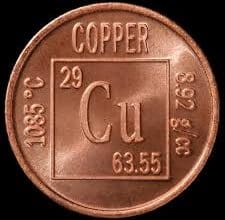A reverse merger is a mechanism by which a smaller, private corporation becomes public by purchasing a larger, publicly-traded company. Because it is less common for a private company to overtake a public company, we refer to it as a “reverse” merger.
Here’s what you need to know about reverse merger and stocks, why they occur, and some past examples of 2020.
What is a Reverse Merger?
When a private corporation decides to go public, the procedure is normally difficult. Then there’s the task of hiring an investment bank to underwrite and issue the stock. There are regulatory approvals, a lengthy due diligence process, and a lot of paperwork to deal with. That’s if all market conditions are favorable for a public offering at the time.
A reverse merger, on the other hand, is a faster way to go public. This strategy involves a smaller corporation purchasing a publicly listed company. This is usually a fairly small public company with little operations. Although the public company “survives” the merger, the private company’s owners become the controlling shareholders. They reorganize the combined companies following their vision. This normally entails replacing the board of directors and changing assets and business operations.
The reverse takeover, reverse IPO are also other names for a reverse merger.
Although going public through a reverse merger can be beneficial for some private companies, the process has also been exploited by companies engaged in fraud and scams.
What Is the Process of Reverse Mergers?
A traditional initial public offering (IPO) process takes months at the very least, and can often take more than a year. A reverse merger enables a private company to go public far more quickly. It also saves the company money on legal and accounting fees.
A reverse merger involves the merger of a private corporation with an existing, smaller company that is already listed on an exchange. Typically, one can accomplish it by purchasing more than 50% of the shares of a publicly-traded firm. If the private corporation has gained effective control of the public company, it will begin the process of integrating its activities with those of the public company.
In this case, the public sector is referred to as a “shell company” because it has few activities of its own. It is essentially a “shell” that the private company will move into and use to gain access to the public market.
It is important to note that, unlike an initial public offering (IPO), no immediate gain during a reverse merger. This speeds up the process of going public, but it also means that reverse mergers are only suitable for private companies that don’t need cash immediately. Companies who want to raise money before going public are better off going the conventional path and doing an IPO.
Recognizing and Avoiding Reverse Mergers
Investing in reverse mergers has many advantages and drawbacks. To be profitable, you must ask yourself if you are ready to invest in a business that will take a long time to recover.
IMPORTANT TAKEAWAYS
- A reverse merger occurs when a private corporation acquires ownership of a publicly-traded company.
- When a company plans to go public via an IPO, the process can take a year or more. However, a reverse merger can allow a private company to go public in as little as 30 days.
- In general, reverse mergers work well for businesses that don’t need capital right away.
- Look for businesses that are attempting to raise at least $500,000.
- Some reverse mergers are accompanied by unanticipated events, such as liability claims and sloppy record-keeping.
You can also understand how the merger works and how the reverse merger will help both private and public company shareholders. Although this can be a time-consuming operation, the rewards can be enormous. This is especially if you find the diamond in the rough that will grow into a huge, profitable publicly traded business.
Reverse Merger Signals
Stay alert if you want to be effective in detecting reverse mergers. It is possible to find possibilities in future reverse mergers by paying attention to the financial media.
It is also prudent to invest in opportunities that are attempting to raise at least $500,000. They are assumed to generate at least $20 million in revenue within their first year as a public company.
Any possible signs to watch for if you’re searching for reverse-merger candidates:
Check for proper capitalization.
In general, reverse mergers work well for businesses that don’t need capital right away. A profitable publicly traded business would typically have at least $20 million in revenue and $2 million in cash.
Companies that are trying to raise $500,000 or more in working capital are the perfect candidates for a reverse merger. Some effective reverse mergers include Armand Hammer’s successful merger into Occidental Petroleum, Ted Turner’s reverse merger with Rice Broadcasting to form Turner Broadcasting, and Muriel Seibert’s public offering of her brokerage business by merging with J. Michaels is a Brooklyn-based furniture company.
Reverse Merger Example
Example 1. Diginex Reverse Merger
Diginex is a Hong Kong-based cryptocurrency corporation that went public through a reverse merger. The reverse merger trades stock with the publicly traded firm 8i enterprises Acquisitions Corp.
Example 2: Ted Turner-Rice broadcasting Reverse Merger
Ted Turner’s merger with Rice Broadcasting is a well-known example of a reverse merger. Ted had inherited his father’s billboard business, but it was in disarray. However, thanks to his ambitious vision for the future, he was able to secure a small investment in 1970. He then went on to buy Rice Broadcasting, which is now part of The Times Warner network.
Example 3: Rodman & Renshaw and Roth Capital Reverse Merger
Small boutique firms, such as Rodman & Renshaw and Roth Capital, went on to introduce more than 40 Chinese companies to American investors and stock markets through a reverse merger with ‘shell’ American public companies that were bankrupt or had little or no market, with transactions totaling 32 million USD.
The Benefits of Reverse Mergers
There are many benefits to conducting reverse mergers, including:
- A private company’s ability to go public at a lower cost and in less time than an initial public offering. When a company decides to go public via an IPO, the process can take a year or more. This has the potential to cost the company money and time. A private corporation will go public in as little as 30 days via a reverse merger.
- When opposed to private corporations, public companies have higher valuations. Some of the reasons for this include improved liquidity, openness and publicity, and, most likely, higher growth rates than private companies.
- Because of the negative impact of existing market dynamics, reverse mergers are less likely to be canceled or placed on hold. This means that if the stock markets are performing poorly or if there is negative publicity surrounding the IPO, underwriters will withdraw the reverse merger bid.
- A tax shelter can be given by the public company to the private company. In certain instances, the public corporation has suffered a string of setbacks. A portion of the losses may be carried forward and applied to future earnings. It is possible to cover a portion of the new company’s income from potential taxation by combining the private and public companies.
The Drawbacks of Reverse Mergers
Reverse mergers have a number of inherent drawbacks, including:
- Some reverse mergers are accompanied by unanticipated events, such as liability claims and sloppy record-keeping.
- With reverse mergers, reverse stocks splits are very common and can drastically reduce the number of shares held by stockholders.
- Many CEOs of privately held firms have little to no experience operating a publicly traded business.
- Many reverse mergers fail to deliver on their promises. The company ends up trading on the OTC bulletin board with little to no added profit or liquidity for shareholders.
How does a reverse merger impact the company’s stock and trading status?
A reverse merger typically results in the private company becoming a publicly traded company, which can have an impact on its stock price and trading status. This process can increase liquidity for existing shareholders and provide access to additional capital through public markets. However, it can also expose the company to increased regulatory and public scrutiny.
What are the regulatory requirements for a reverse merger?
A reverse merger is subject to various regulations at both the federal and state level. The Securities and Exchange Commission (SEC) oversees the registration process and disclosure requirements for publicly traded companies. The company may also be subject to state securities laws, shareholder approval requirements, and ongoing reporting obligations.
What are the benefits of a reverse merger for private companies?
For private companies, a reverse merger can provide a quicker and less expensive path to becoming a publicly traded company compared to an initial public offering (IPO). It can also provide access to additional capital, increased liquidity for existing shareholders, and greater visibility in the market.
What are the alternatives to a reverse merger?
Alternatives to a reverse merger include an initial public offering (IPO), a merger or acquisition with another public company, or a direct listing. The choice of the alternative depends on the company’s goals, financial position, and market conditions.
How does a reverse merger impact the company’s brand and reputation?
A reverse merger can have both positive and negative impacts on a company’s brand and reputation. The public listing and increased visibility can raise the company’s profile, but it can also lead to increased regulatory and public scrutiny. The company must be prepared to meet higher standards of transparency and disclosure and may need to consider how to maintain its brand and reputation through the transition.
How long does a reverse merger process typically take?
The timeline for a reverse merger process can vary greatly, but it typically takes several months to complete. Factors that impact the timeline include the complexity of the transaction, regulatory approval requirements, and the level of due diligence required.
How does a reverse merger impact the company’s listing on stock exchanges?
A reverse merger typically results in the private company becoming publicly traded and listed on a stock exchange. This process can provide access to additional capital, increase liquidity for existing shareholders, and provide greater visibility in the market. The company must be prepared to meet the ongoing reporting and regulatory requirements associated with being publicly traded.
In conclusion
The reverse merger represents an ideal opportunity for private companies to avoid any of the procedures that are typically involved in the IPO process. Reverse mergers are usually the most cost-effective way for a company to get listed on a stock exchange. This enables them to go public.
However, given the limitations and reach of abuse of such routes as a result of restricted transparency and knowledge asymmetry, many in the financial sector domain have taken advantage of such loopholes. To prevent such events, it is critical that ethical frameworks be well ingrained in them.
Once these problems are resolved, the only consideration that private companies must remember is the restricted reach of such routes in comparison to the IPO path, as well as the basic nitty-gritty involved in managing the regulatory requirements required of a public corporation.
Reverse Merger FAQs
What is reverse merger example?
One example of a reverse merger was when ICICI merged with its arm ICICI Bank in 2002. The parent company’s balance sheet was more than three times the size of its subsidiary at the time. The rationale for the reverse merger was to create a universal bank that would lend to both industry and retail borrowers.
What happens in a reverse merger?
In a reverse merger, a private company buys out a public one, then has shares of the new business listed for public trading. Basically, this means going public without the usual risk and expense of an initial public offering — and being able to do it in weeks rather than months or even years.
Why would a company do a reverse takeover?
Benefits of a Reverse Merger
In most cases, a reverse merger is solely a mechanism to convert a private company into a public entity without the need to appoint an investment bank or to raise capital.
How does reverse takeover work?
A reverse takeover (RTO) is a process whereby private companies can become publicly traded companies without going through an initial public offering (IPO). … The private company’s shareholder then exchanges its shares in the private company for shares in the public company.
- How to Gain Market Share
- Business Valuation: All you need to know [Detailed Guide]
- Global Marketing: Simplified strategy to scale any business
- Reverse Auction Examples, Websites & Process (+ Quick tips)
- PUBLIC FINANCIAL MANAGEMENT: ALL YOU SHOULD KNOW (+DETAILED GUIDE)
- PRIVATE INVESTMENT: How To Start On The Right Foot With The Best Private investments Option






